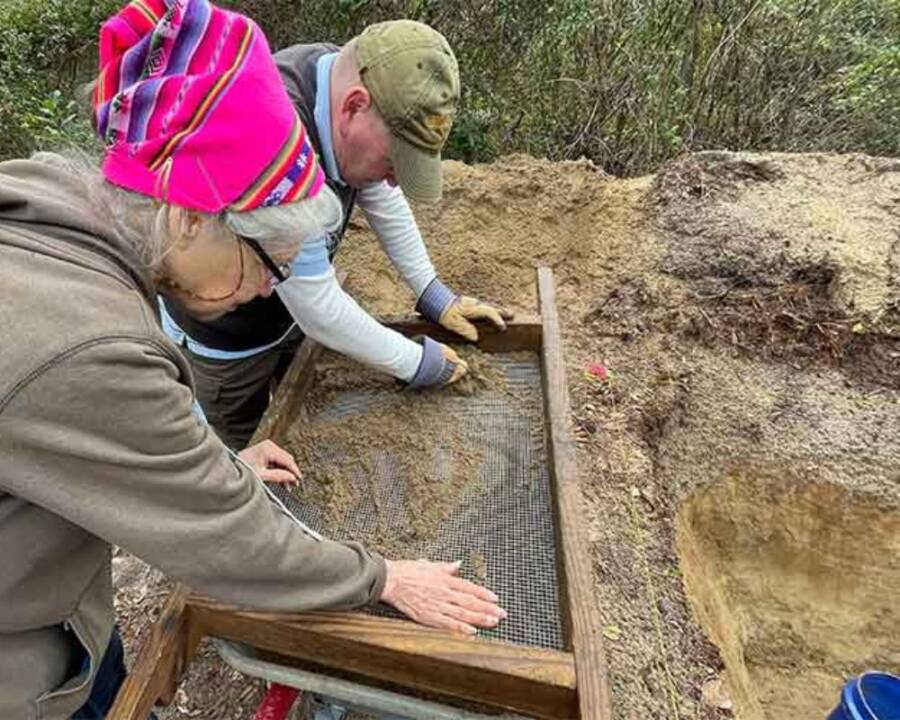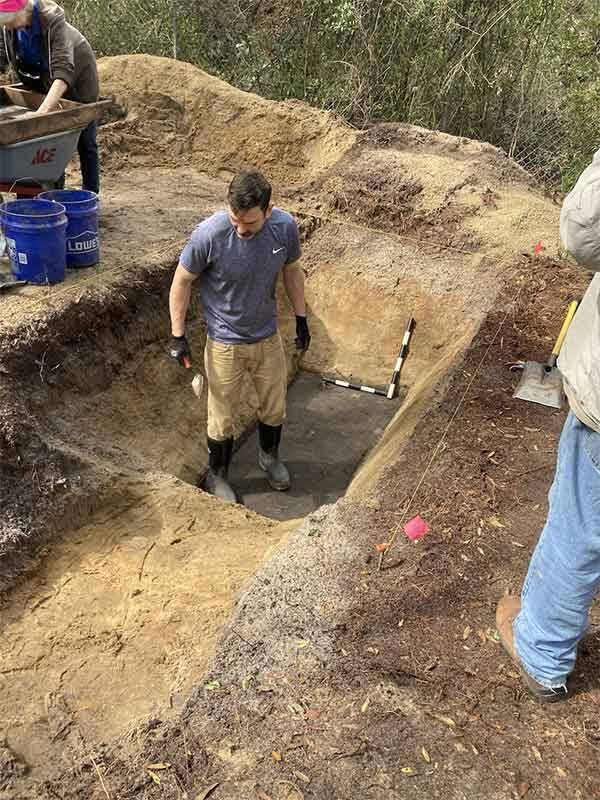Archaeologists from the the First Colony Foundation discovered pieces of 16th-century Algonquian pottery and a copper ring of European origins in North Carolina.

Public DomainAn artistic depiction of John White’s 1590 expedition to Roanoke Island, when he found the colony deserted and the word “Croatoan” carved into a post.
Archaeologists in North Carolina recently uncovered Indigenous artifacts from the 16th century that connect the Algonquian tribe to English settlers — and they may provide clues about the unknown fate of the Roanoke Colony.
The story of the Lost Colony of Roanoke is one of early America’s greatest mysteries. Established in 1587 by John White and 117 settlers, the colony was located on Roanoke Island in modern-day North Carolina and was meant to be England’s first permanent settlement in the New World.
Just a month after arriving on Roanoke Island, White sailed back to England to petition Queen Elizabeth I for more provisions for the colony. Unfortunately, the arrival of the Spanish Armada prevented White from returning to America until 1590.
That year, White arrived at Roanoke to find that the colonists had abandoned the settlement. The only clue as to their whereabouts was the word “Croatoan” carved into a post. Croatan was the name of a nearby island, and White believed the members of the colony had moved their settlement there. However, damage to White’s ship prevented his crew from searching Croatoan to confirm his theory.
Today, the truth about what happened to the Roanoke colonists remains largely shrouded in mystery.
Archaeologists Dig Into The Story Of The Lost Roanoke Colony
In the summer of 2023, the First Colony Foundation made an exciting discovery in the search for the truth about one of America’s greatest mysteries.
While excavating a site on Roanoke Island, archaeologists discovered fragments of 16th-century Indigenous pottery and a ring of copper wire that had belonged to the Algonquian tribe.

The First Colony FoundationWorkers sift through dirt in search of artifacts at the Roanoke Island archaeological site.
“Finding domestic pottery — the type used for cooking — in close proximity to an apparent piece of Native American jewelry strongly confirms we are digging in the midst of a settlement,” Dr. Eric Klingelhofer, the First Colony Foundation’s Vice President of Research, stated in the organization’s press release. “And [Roanoke] is the only known village at that site.”
What’s more, the Algonquians didn’t have the technology to produce the rounded strands of copper that made up the ring. Therefore, they must have gotten it through trade. French and Spanish explorers weren’t present in the area in the late 16th century, so, as Klingelhofer explained, it “indicates contact with the English.”
Could they have traded with the settlers from the Lost Colony of Roanoke?
The Next Steps For Solving The Mystery Of The Lost Colony
This year, archaeologists from the First Colony Foundation began excavations to search for evidence of Indigenous and English settlements in the region.

The First Colony FoundationVolunteer Jeremy Bliven works at the excavation site.
During these digs, researchers uncovered charcoal and shards of Algonquian cooking pots, as well as evidence of a large wall surrounding the Algonquians’ Roanoke settlement and at least nine houses where the tribe’s elite warriors lived.
“The objects we found are important, but it’s their relationship to different soils which are evidence of links to the past, and together that’s what tells the story,” Klingelhofer stated in the press release. “And we’re beginning to see that this site was more of a capital with a tribal seat where a ruler or chief lived, and it would be palisaded to keep him safe.”
This description of a fortified Algonquian village matches accounts from English settlers at the time. Now, researchers are trying to locate the original settlement of the 117 colonists at Roanoke Island. Hopefully, the clues they have uncovered so far will continue to lead them in the right direction — and bring an end to this centuries-old mystery.
After reading about the latest archaeological digs on Roanoke Island, learn about the Wendigo, the cannibalistic cryptid of Algonquian folklore. Then, go inside 11 mysterious disappearances that are still unsolved to this day.





